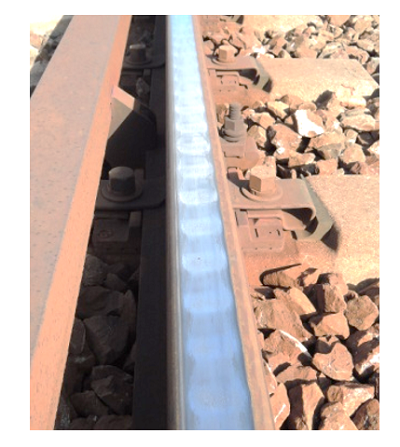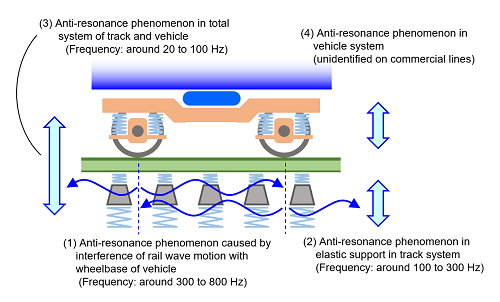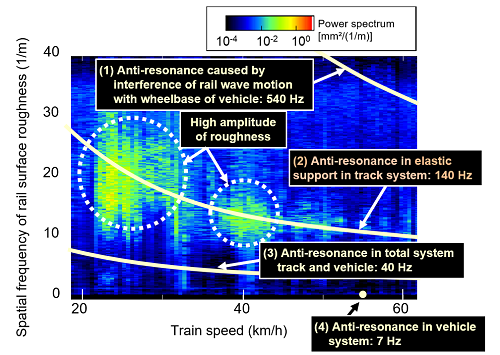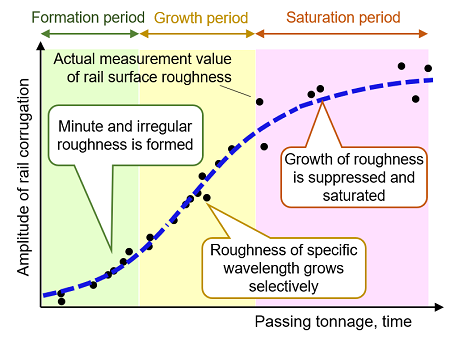27. Clarification of growth mechanism and evolution process of rail corrugation
Rail corrugation is a phenomenon in which roughness is formed on the top surface of rail with a regular wavelength due to the passage of vehicles, causing noise and vibrations (Fig. 1).
As a remedy, rail grinding is implemented periodically to remove surface roughness.
However, since the growth mechanism and the evolution process remain unexplained, fundamental control measures have yet to be established.
To ascertain the growth mechanism of this roughness, a theoretical analysis has been performed taking the dynamic interaction of track and vehicle into consideration, leading to the discovery that there were four kinds of growth factors subject to the vibration characteristics of track and vehicle, and the wheelbase (Fig. 2).
By comparing the occurrence of rail corrugation measured on commercial lines and the result of theoretical analysis, each wavelength was confirmed to almost agree with the theoretical value, and the growth factor was identified (Fig. 3).
The measurement of surface roughness was continued on commercial lines to show that there existed a formation period, growth period and saturation period in the evolution process of rail corrugation (Fig. 4).
This evolution process was confirmed to be reproducible by dynamic interaction analysis of track and vehicle.
In the future, control measures based on the growth mechanism of rail corrugation and proper rail grinding method based on the evolution process will be proposed.




